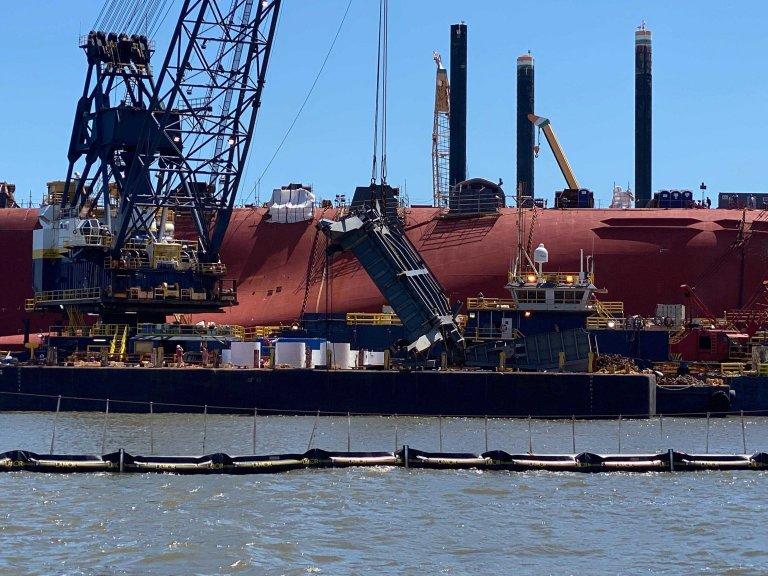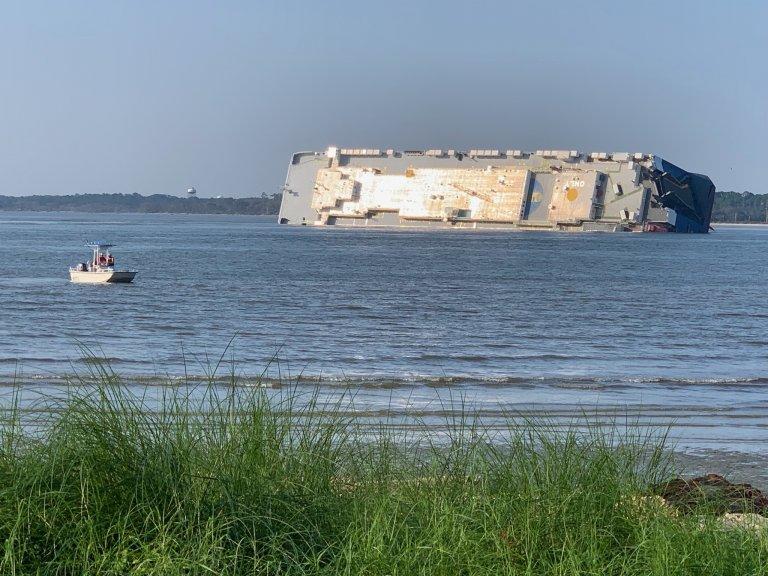
Caption
A salvage crew used a crane on June 24 to hoist a section of the Golden Ray's ramp used to load vehicles on and off the ship. The Coast Guard is delaying the ship’s removal from St. Simons Sound until at least October to avoid the peak of hurricane season. / U.S. Coastguard
Credit: Petty Officer 1st Class Anthony Clark, U.S. Coast Guard


